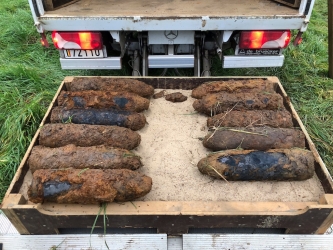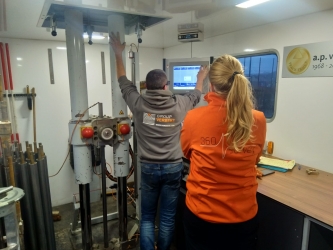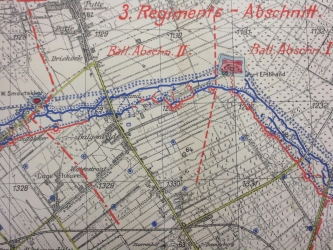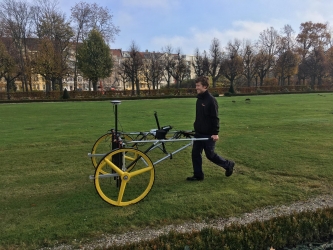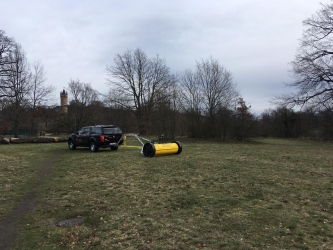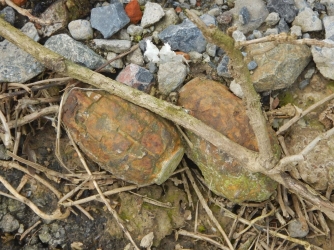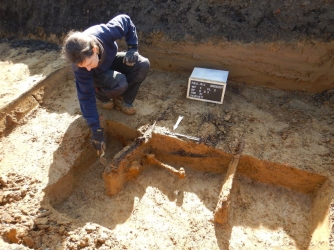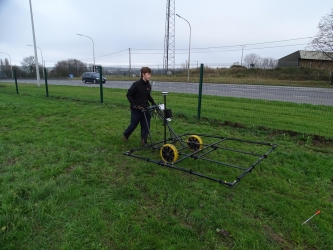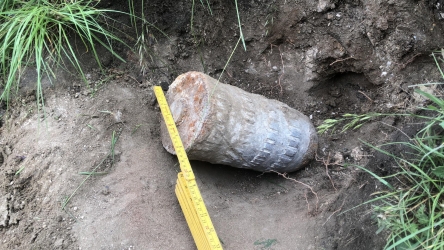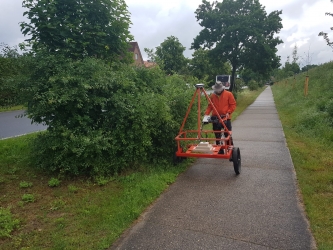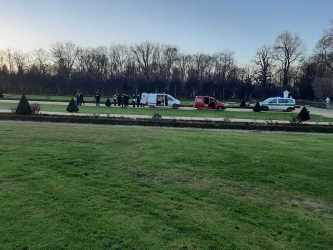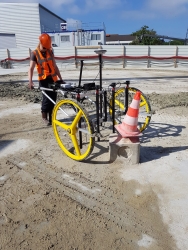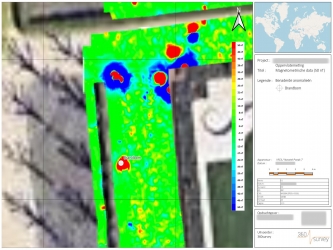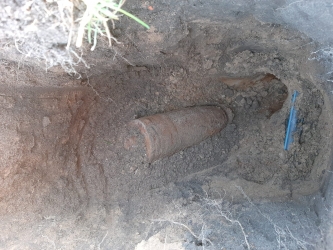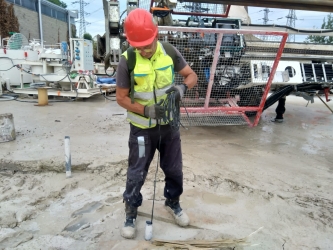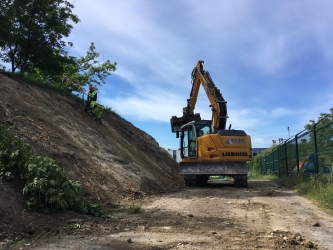What is UXO?
Unexploded Ordnance (UXO) is any sort of ammunition that can not be categorised as improvised, nuclear or biological and has failed to function as intended. In addition to that, guns or parts of it, remnants of UXO, ammunition that worked but still contains explosive compounds or objects that can be seen as UXO by the public are also treated as and considered to be UXO.
Detection in a nutshell
Every survey project starts with a historical desktop study. This way, we try to assess the chances to find UXO and also the possible types we may encounter. Based on this preliminary investigation and in function of the project details, we make a risk analysis and propose risk mitigation actions to be taken. The next step is to detect and locate possible UXO using geophysical survey techniques. Given the expected types of UXO to be encountered, the expected burial depth and other environmental factors, we decide which geophysical survey technique(s) is/are to be used. The detection outcome is processed and results in an object list and map. Finally, a UXO-expert relocates the detected objects and selects which of them are UXO. These objects are temporarily put to safety while awaiting the arrival of the state explosive ordnance disposal unit (DOVO or SEDEE in Belgium).
Our interdisciplinary team is specialised in UXO used on Belgian soil, during the Franco-Prussian war of 1870-1871, both World Wars, pyrotechnics, naval UXO (sea mines, depth charges, torpedo’s), port areas and dumpsites.
In Belgium we conduct our activities according to the Practical guideline for the detection and disposal of UXO in soil and subaquatic bodies. Using our network of international partners, we can assist or conduct international UXO projects.
In a desktop study we ask ourselves what the chances are to find UXO. Have there been military actions in the project area and what happened since? We get this kind of information from our archive that includes national and international sources. For projects based on land, an investigation is normally carried out using aerial photographs, mission reports and field reports. At sea, important information comes from cartographic material and ship logs. We want to have a picture as complete as possible: we want to know what kind of UXO we can expect, out of which materials they are made, at what depths we can encounter them and in which state of disintegration. By doing so, unpleasant surprises and unexpected costs can be minimized in later stages of the project.
Can ammunition from the previous century still explode? Are artillery shells as dangerous as bombs dropped by an aeroplane? How does a sea mine look after several decades in the water of the North Sea? The same as a sea mine in the Mediterranean? There is not a lot of scientific research about it and practical experience is often key. We have a look at the planned activities together with the client and adapt the risk mitigation measures to this. We make sure there is a safe working environment within the project area and its immediate surroundings.
Technical advancements and the changing availability of resources during war time result in a wide variety of materials to look for when searching UXO. All possible metal alloys but also wood, concrete, glass, cardboard and chemical components were used in ammunition production. An object is only detectable if it has a propriety that is sufficiently different from its surroundings. Geological or anthropogenic factors can have a negative influence on the detectability. Therefore, the detection technique is always tailored to the local circumstances. We are aware of what is possible, but, perhaps even more important, also what the limitations are of a given technique. In this case, complementary detection techniques can provide a solution. We use high quality detection equipment, suited for both terrestrial and marine conditions.
Based on the detection result, possible UXO is located, approached and identified by our UXO-experts. They make an assessment and decide if the object is posing a safety risk to the surroundings or not. If it is, they take action to mitigate the risk until the state explosive ordnance disposal unit is at the scene and intervenes. Upon completion of the project, 360survey provides a statement that the area is free of explosives within the contours of the earthworks and in relation to the used detection techniques.
